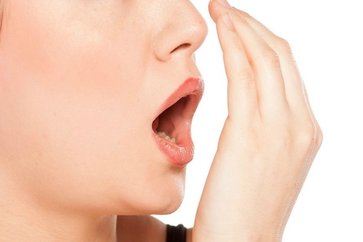Ayurvedic Tips for Staying Healthy in Monsoons
Monsoon is considered the best season for Ayurveda rejuvenation programmers as the atmosphere remains dust-free and moist. In monsoon, the pores of the body are open naturally, which makes them more sensitive to herbal oils and massages.

In addition, during the rains, the herbs and medicinal plants, which are the necessary ingredients used in these medicines, are found to grow in abundance. According to Ayurveda, the rainy season is also the time when a pitta decline. Pitta function as the energy of our body prevailing in the fire element, and is initially liable for the metabolism and digestion of food.
Digestion is weak during this time and diseases caused by Pitta like indigestion, and hyperacidity. Skin disorders and infections like eczema boils; rashes are common during this season.
It is the time when the humidity levels within the atmosphere are high. There is also a lack of sunlight (known as Ojas), the necessary fluid. Due to the lack of oxygen in the air, people often complain of breathlessness and weakness.
Why is Ayurvedic Rejuvenation Spa Necessary?
According to the Ayurvedic textbook rejuvenation of soul and body is termed as (Rasayana therapy) rejuvenation therapy. The therapy is designed to advance good health and help a great deal in increasing the longevity of life.
It is capable of curing many diseases, which are otherwise hard to find treatment for it. Rejuvenation treatment improves the energy and the person’s physical and mental capabilities.
Three fundamental Tridoshas Vatta, pitta, and Kapha are believed to be the part and package of our basic natural existence. It is believed strongly in Ayurveda therapeutic science that to take pleasure in well-being the three doshas need to be in a balanced state inside the human body.
It is also the reason that ailment crops up due to the inequality (aggravation or decline) in the normal performance of the doshas. The process of seasonable detoxification of the body is requisite to maintain the natural balance of the three doshas.
Essentials Of Ayurvedic Rejuvenation Spa
The essentials of Ayurvedic Rejuvenation Spa during the rainy season can be understood as follows:
1. Loss of Energy and Digestive Power: The rainy season is characterized by a significant decrease in energy levels and a decline in digestive power. The moist atmosphere and lack of sunlight contribute to feelings of low energy and frailty.
2. Increased Incidence of Gastric Upsets and Skin Diseases: The combination of the rainy season’s conditions leads to a higher occurrence of gastric upsets and skin diseases. The damp environment provides a favorable breeding ground for microorganisms, making individuals more susceptible to these ailments.
3. Imbalance of Doshas: During the rainy season, all three doshas—Vata, Pitta, and Kapha—tend to become imbalanced, with Vata being particularly affected. This imbalance can manifest as joint pains, body stiffness, uneasiness, stomach upsets, and nervous anxiety.
4. Controlling Aggravation: To address these issues, it becomes essential to control and alleviate the aggravation caused by Vata. Failure to do so can lead to further imbalances within the body over time.
Ayurvedic Rejuvenation Spa during the rainy season aims to tackle these challenges by employing specific techniques and treatments:
a. Balancing Doshas: The spa treatments focus on balancing the doshas, particularly Vata, which is prone to imbalance during this time. Specialized therapies, herbal oils, and massages are used to restore harmony to the body.
b. Strengthening Digestion: The spa treatments also aim to strengthen digestion, as the rainy season often leads to weakened digestive power. Herbal formulations and dietary recommendations are provided to improve digestion and alleviate gastric upsets.
c. Detoxification: Detoxification plays a crucial role in Ayurvedic rejuvenation spa treatments. The body is gently detoxified to eliminate accumulated toxins and restore the body’s natural balance.
d. Rejuvenating Therapies: Rejuvenation therapies, such as Abhyanga (oil massage), Shirodhara (pouring of oil on the forehead), and Swedana (herbal steam therapy), are employed to revitalize the body, improve circulation, relax the mind, and enhance overall well-being.
In summary, Ayurvedic Rejuvenation Spa during the rainy season focuses on addressing the loss of energy, digestive issues, and imbalances caused by weather conditions.
By balancing the doshas, strengthening digestion, detoxifying the body, and providing rejuvenating therapies, these spa treatments aim to promote optimal health and well-being during this challenging time.
How does Panchakarma & Rejuvenation work
Panchakarma and rejuvenation therapies work through the following processes:
1. Understanding Doshas
The body consists of three Doshas—Vata, Pitta, and Kapha—which are responsible for maintaining the body’s equilibrium and overall health. Any health issue or disease arises due to an imbalance of these Doshas. Factors such as a busy and stressful routine, unhealthy eating habits, and lack of quality sleep can contribute to this imbalance.
2. Oral Medications
Oral medications can help address diseases in their initial stages. However, for advanced stages and chronic ailments, deeper intervention is required because the imbalanced Doshas can toxify the body and become difficult to treat through oral medications alone.
3. Panchakarma Detoxification
Panchakarma is a comprehensive detoxification process that aims to eliminate toxins from the body and restore the balance of the Doshas without causing any side effects. It consists of several methods, each with its specific significance and timing for healthy individuals.
4. Importance for Diseased Individuals
Individuals with diseases require Panchakarma as the disease itself indicates the necessity for detoxification and restoration of balance in the body and mind.
5. Constraints during Detoxification
When undergoing Panchakarma, certain constraints are advised. For example, it is recommended to avoid engaging in strenuous exercise programs or prolonged exposure to the sun, as these activities can increase sweat production and potentially block the skin channels. Daytime sleep and consuming river water or sattu mixed with water is also prohibited during this process.
Overall, Panchakarma and rejuvenation therapies provide a holistic approach to detoxifying the body, restoring Dosha balance, and promoting overall well-being.
They are particularly beneficial for addressing chronic ailments and achieving deep-rooted healing beyond the scope of oral medications alone.
Rejuvenation Diet Program For Monsoon
During the monsoon season, there is a natural increase in the air element in our body systems, which needs to be balanced and pacified. Following a special diet regime can be supportive in achieving this goal. Here are some recommendations:
1. Light and Digestible Foods: Opt for light and easily digestible foods such as cooked or steamed vegetables, zucchini, squash, pumpkin, steamed salads, fruits, moong dal (mung beans), khichdi (rice and lentil dish), corn, chickpea flour, and oatmeal. These foods are gentle on the digestive system and can help maintain balance.
2. Cooking Oils: Use cooking oils like ghee, olive oil, corn oil, and sunflower oil, as they are lighter in nature. Avoid heavy oils such as mustard oil, butter, peanut oil, and other heavy and heating oils. Including plenty of garlic and ginger in your food preparations is recommended.
3. Natural Antioxidant Herbs: Ginger, cinnamon, and holy basil are natural antioxidant herbs that can be consumed as morning tea in the form of decoction. These herbs can also be mixed with honey for added benefits. Honey, in particular, is beneficial for seasonal cleansing and can be consumed daily by mixing it in a glass of boiled and cooled water.
4. Freshly Cooked and Digestible Foods: Emphasize consuming freshly cooked and easily digestible foods in your daily diet. These foods help to pacify the aggravated air humor (Vata) and support healthy digestion. It is advisable to avoid dry and rough food items as they tend to worsen Vata and should generally be avoided.
5. Increased Water and Liquid Intake: During the detoxification process in the monsoon season, it is important to increase your water and liquid intake. This helps in flushing out toxins from the body and also helps compensate for the excessive sweat produced during this season, preventing dehydration.
By following these dietary recommendations, you can support the balance of your body during the monsoon season and promote overall well-being.
Remember to listen to your body’s needs and make adjustments as necessary to suit your individual constitution and health requirements.
Lifestyle For Monsoon Season
In the monsoon season, Ayurveda recommends following a specific lifestyle to take care of your skin and overall well-being. Here are some suggestions:
1. Sandalwood Paste: Applying a paste made by rubbing sandalwood on a mortar can help keep your skin soft, supple, and pleasantly fragrant. This remedy also helps prevent bad odor caused by increased sweat in the humid climate.
2. Turmeric and Besan Scrub: Ayurveda advises using a body massage paste made by mixing turmeric and besan (gram flour) with water or raw milk. Using this scrub once or twice a week can effectively open up the skin channels and aid in detoxification.
3. Daily Scrubbing: It is recommended to gently scrub the skin after taking a bath on a daily basis during the rainy season. This practice helps remove toxins that may have accumulated and releases them through the pores of the skin. Additionally, it prevents the buildup of infection-causing germs and microorganisms.
4. Hydration: Staying hydrated is crucial during the monsoon. Due to the increased humidity, the body tends to lose fluids through sweating. Make sure to drink an adequate amount of water and include hydrating fluids such as herbal teas, fresh fruit juices, and coconut water in your daily routine.
5. Balanced Diet: Maintain a balanced diet that includes warm, cooked meals. Avoid heavy, oily, and fried foods, as they can be difficult to digest and may contribute to digestive issues during this season. Instead, focus on light and easily digestible foods such as soups, steamed vegetables, whole grains, and fresh fruits.
6. Herbal Infusions: Including herbal infusions in your daily routine can provide additional health benefits. Herbal teas made from ginger, mint, tulsi (holy basil), and cinnamon can help boost immunity, aid digestion, and keep respiratory ailments at bay.
7. Foot Care: Pay attention to foot hygiene during the monsoon season. Keep your feet clean and dry, as moisture can lead to fungal infections like athlete’s foot. Use antifungal powders or natural remedies like neem powder to keep your feet fresh and free from any infections.
8. Clean Living Space: Ensure that your living space is clean and well-ventilated. The dampness in the air during the monsoon can promote the growth of molds and mildew, which can trigger allergies and respiratory issues. Regularly clean and dry your surroundings, especially areas prone to moisture buildup.
9. Exercise: Engage in light exercises and yoga to stay active and maintain good circulation. Avoid vigorous workouts during heavy rains to prevent the risk of slipping or injuries. Indoor exercises like stretching, yoga asanas, and breathing techniques can help improve flexibility, strengthen the immune system, and uplift your mood.
10. Adequate Rest: Give your body ample rest and sleep. The monsoon season can sometimes bring a sense of lethargy due to the weather conditions. Listen to your body’s signals and ensure you get enough rest to rejuvenate and replenish your energy levels.
By incorporating these practices into your monsoon routine, you can promote healthy and radiant skin while aiding the detoxification process and protecting against potential infections.
Precautions Required During Monsoon
In the rainy season, there is generally increased sweat, which tends to block the toxins inside the body’s channels. This might prevent the detoxification process. For this resolution, proper hygiene has to be maintained.
A routine change of underclothes is a must, and it is suggested to wear clean and comfortable cotton wool clothes. Synthetic clothes are a strict no-no for this humid season, especially while undergoing operation of detoxification.

























